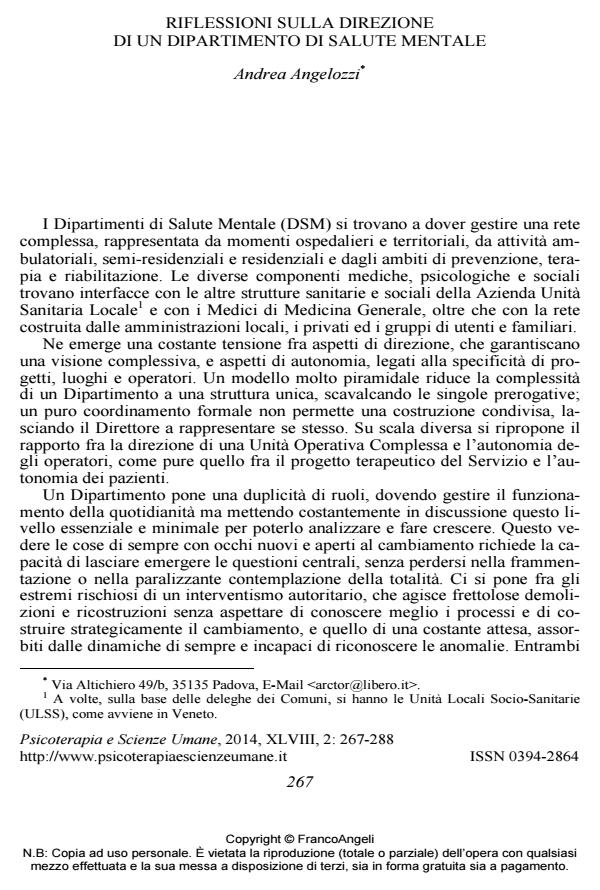Some thoughts on the direction of a Community Mental Health Center
Journal title PSICOTERAPIA E SCIENZE UMANE
Author/s Andrea Angelozzi
Publishing Year 2014 Issue 2014/2
Language Italian Pages 22 P. 267-288 File size 90 KB
DOI 10.3280/PU2014-002004
DOI is like a bar code for intellectual property: to have more infomation
click here
Below, you can see the article first page
If you want to buy this article in PDF format, you can do it, following the instructions to buy download credits

FrancoAngeli is member of Publishers International Linking Association, Inc (PILA), a not-for-profit association which run the CrossRef service enabling links to and from online scholarly content.
Various issues related to the management of complexity in a Community Mental Health Center are discussed. After having described many difficulties encountered in this area, the paper focuses on the importance of participative models and shared information, on the ways that protect from chronicity and on a broader view of resources available in Mental Health. An organization fully geared to sharing, to availability of information, to accountability and against self-reference can facilitate a fully collaborative relationship with patients and a more careful use of resources.
Keywords: Community Mental Health Center, complexity, human resource management, information, resources
- La necessità del cambiamento Andrea Angelozzi, in PSICOTERAPIA E SCIENZE UMANE 4/2022 pp.545
DOI: 10.3280/PU2022-004002 - Sorvegliare e curare. Riflessioni sul percorso di chiusura degli Ospedali Psichiatrici Giudiziari Andrea Angelozzi, in PSICOTERAPIA E SCIENZE UMANE 3/2015 pp.464
DOI: 10.3280/PU2015-003009
Andrea Angelozzi, Riflessioni sulla direzione di un dipartimento di salute mentale in "PSICOTERAPIA E SCIENZE UMANE" 2/2014, pp 267-288, DOI: 10.3280/PU2014-002004